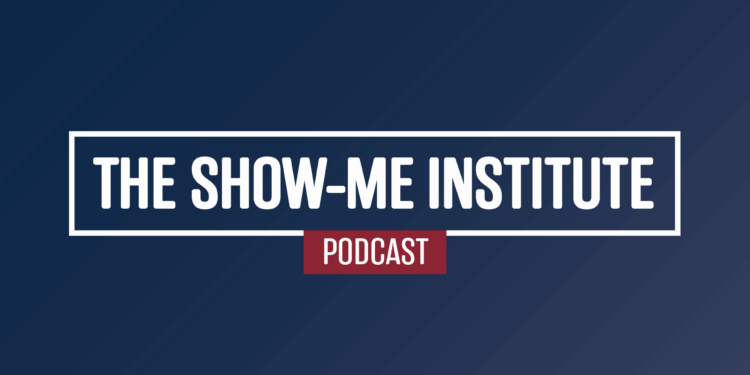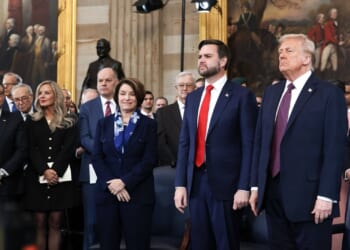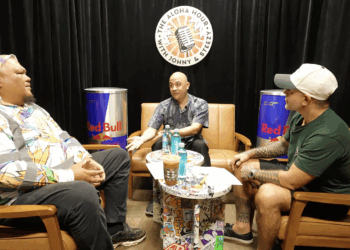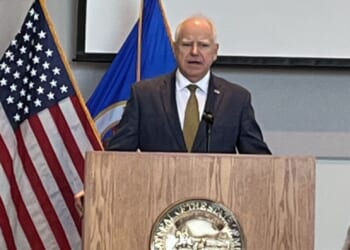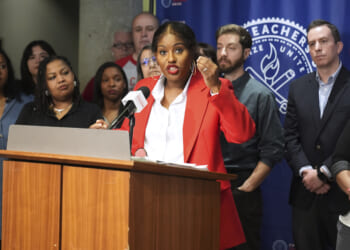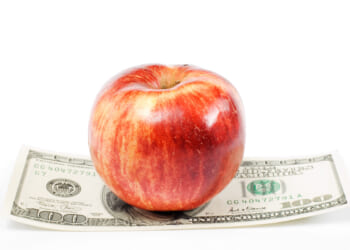Learn more about the book here: www.cato.org/books/fighting-freedom-learn
Susan Pendergrass speaks with James Shuls, fellow at the Show-Me Institute and head of the Education Liberty Branch at Florida State University, and Neal McCluskey of the Cato Institute about their new book, Fighting for the Freedom to Learn: Examining America’s Centuries-Old School Choice Movement. They discuss how the fight for educational freedom long predates modern debates over public schooling, why early advocates viewed schooling as a family and community responsibility, and how today’s school choice expansion connects to America’s founding principles. The conversation covers the history of the common school movement, the roots of residential school assignment, and why educational freedom has always been central to the American story, and more.
Timestamps
Chapters
00:00 Introduction to the Institute for Governance and Civics
02:33 The Genesis of ‘Fighting for the Freedom to Learn’
05:41 Historical Perspectives on School Choice
08:04 The Evolution of Common Schools and Their Impact
10:59 The Role of Religion in Early Education
14:01 The Shift Towards Standardization in Education
16:43 The Need for School Choice in Disadvantaged Areas
19:29 The Historical Context of Property Taxes and School Assignment
22:17 The Recent Surge in School Choice Movements
Transcript
Susan Pendergrass (00:00)
Certainly looking forward to this conversation with two very, very smart people: Dr. Neal McCluskey of the Cato Institute and Dr. James Shuls of Florida State University. James, can you first tell us about this new center that you are in charge of at Florida State University? I think it’s innovative and really cool, and I’d like to hear a little bit more about it before we talk about your book.
James Shuls (00:21)
Absolutely. So I’m with the Institute for Governance and Civics, and it was created by the legislature a couple years ago. And while I would like to take credit and say I’m in charge of it, as you sort of said there, Susan, I’m not in charge of the Institute, but I’m one of the branch heads. So the IGC, as we call it, has four branches. We focus on economic liberty, constitutional liberty, conscience liberty, and education liberty. I’m the head of the education liberty branch.
And so part of what we’re doing is outreach to K–12 schools, helping to focus on civics instruction, improving knowledge and preparation for teachers as it relates to civics and governance and those sorts of things. At the same time, we’re writing about issues of educational liberty from a school choice perspective, which is exactly the topic we’re talking about today.
Susan Pendergrass (01:12)
Yeah, so you guys have a book that you just co-edited, Fighting for the Freedom to Learn: Examining America’s Centuries-Old School Choice Movement. How did you come up with this idea, and why did you decide to put this book together?
Neal McCluskey (01:27)
Sure, I’ll go with that. The idea behind the book stems from just about everything I ever do, which is I got angry about something, and I was like, well, somebody ought to do something about this. If you work in school choice advocacy for more than a day or so, you’ll quickly hear that school choice started by people trying to avoid desegregation in the South. And that’s always given as the origin. And even if somebody wants to say, well, you know, Milton Friedman wrote this essay in 1955—and he really wrote it before 1955—we know that that was really just taking advantage, at the very least, of this backlash against desegregation.
And it just drives me nuts. There is a very long, rich history of the idea and practice of school choice. So I thought, you know, somebody ought to do a book on that, and we can hit, sort of semi-chronologically, all the different eras in which this happened and the ebbs and flows. The Cato Institute and the Center for Educational Freedom, which I direct, also had something called the School Choice Timeline—this interactive online timeline that I put together also because I was angry. In particular, I wrote a chapter about the gap where not much was going on in school choice, and I wanted to explain the gap.
But we have lots of chapters—one on how progressives were really into school choice for a while, and how schooling worked before the common-schooling movement, and all sorts of stuff like that. The genesis was aggravation on my part, at least, about always hearing this narrative that school choice stems from efforts to avoid desegregation. And then I said, you know, James Shuls—there’s a guy who probably is angry a lot, too. Maybe he’d like to get in on this.
James Shuls (03:17)
Yeah, that’s right. Susan, I’ve been on the podcast before talking about some of my scholarship related to Virgil Blum. He was a real strong school choice advocate starting in the ’50s, did a ton of work, and gets absolutely no credit. I was angry that Friedman gets all the credit—he wrote this paper in 1955, yada, yada, yada—and then in the 1990s we get school choice programs. It’s like, well, a lot happened in that yada, yada, yada period that we’re not covering.
I had been writing about that when Neal came along with the idea to do the book. Part of what we’re doing as we frame this is saying: looking at school choice today through the current lens we have is the wrong way to do it. We think of school choice today as opting out of the public school system—but that only works to frame it that way if there is a public school system. Before common schools were around, people were still advocating for their kids, still trying to get schools created. So there was lots of stuff that wouldn’t fit the framework we have today.
What we’re saying in this book is these impulses for educational freedom have always existed, and we’re essentially tracing them from colonial times to today.
Neal McCluskey (04:36)
James’s stuff on Blum was also a major reason I thought, here’s a guy who could really contribute to this. I just stumbled on Blum in large part because of what James wrote. I was like, why do people not know about this guy?
Susan Pendergrass (04:41)
We did a whole podcast on it. I’ll tell you what makes me mad is that in the last month or two, tops, there have been articles in The New York Times and The Washington Post talking about low-income families—both in Florida and Arizona—generally Black and brown parents, who are participating in this right-wing conservative movement to kill the public school system because they think they deserve to be able to choose where their kid goes to school.
Even locally in political groups, people say, well, that’s a MAGA person, which means they support charter schools. When those two things get put into a sentence, it really makes my blood boil because I’ve been working in this space a long time. As we’re going to find out more, school choice is not a new thing at all. The latest iteration of it is not a MAGA thing or five years old or a COVID thing. Since at least 1990—at least 35 years—parents and activists like Howard Fuller were saying, hey, this isn’t right. We’re literally assigning kids to the worst schools and not letting them out. We ought to let them out.
Somehow this has become the Republican agenda to kill teacher unions and break up the public school system. Nothing could be further from the truth. That makes me mad. That’s why I’m really glad you guys put this book together. Let’s go back—not to the very beginning of the country—but pre–industrial revolution, pre–John Dewey, before standardized schools, attendance zones, and district lines. What did it look like, say 150 years ago? Did parents decide where their kids went to school, or did you have to go to a certain school because that was the one you helped pay to create? How did it work back in the day?
James Shuls (06:50)
I’ll jump in here because I’m awfully angry about this. Before common schools, there was a wide mixture of different types of schools. You had dame schools, private schools, public schools, and publicly funded private schools.
What you get in Charles Glenn’s chapter, “Emergence of the Common School Ideology,” is an understanding of the movement towards common schools. The impetus behind them was really to separate schooling from the family and the community and to use schools for social change. That’s the difference that comes in here—schooling would be used for social change.
Susan Pendergrass (07:29)
Mm-hmm.
James Shuls (07:35)
—to create and form Americans. Some people look at that and say it’s a good thing, but there are certainly negative side effects as well when you separate the impact of community and families. An interesting element that comes out in this book is that the common school ideology and the public school system that has come in its wake was created to form a certain kind of American citizen.
Then we get into Neal’s chapter, where Neal talks about the sort of gap where things aren’t happening. It’s because these systems were under attack. You see a reemergence in the 1950s—not just because of Brown and segregation—but because you start to have a return to some of these values and a return to trying to connect schooling and the family and the church.
When you look at school choice with this longer arc, rather than looking at the ’50s as your starting point, you see the various impulses that were leading pre–common schools, how common schools helped to squash some of those things, and how we’re starting to come back to a decentralized and pluralistic system.
Susan Pendergrass (08:50)
Certainly the common schools—also called public schools before 1900—were Protestant. They absolutely taught religion. They didn’t stop teaching religion until the Catholics started showing up. Then it was, yeah, maybe we get religion out of schools, right? Because we don’t want Catholicism in a public school. Public schools taught Protestantism; they just didn’t want to teach Catholicism. People think there’s always been separation—no religion in public schools—and that’s not true.
James Shuls (09:16)
That’s a key point in Matthew Lee’s chapter: Catholics turned to private schools. He would say it’s not necessarily school choice because the Catholics were saying you had to go to the Catholic schools—so no choice among Catholic schools. Nevertheless, the Catholic schools came up because the public schools were Protestant. Protestants went in—though not all in. There were some segments, which Neal could talk about, with the Lutherans.
By and large, Protestants supported the common school movement. Then there was a movement to secularize public schools. Again, that’s part of what happens in the 1950s with the return of Protestants starting to support school choice—because their capture of the public school system had been weakened and there were no longer Protestant schools.
Neal McCluskey (10:10)
Just as a pitch for the book: there’s so much good history in here that we won’t be able to talk about. You definitely want to get the book. It’s worth noting that for much of our early history—colonial period, early republican period, even into the common-schooling period—there wasn’t a separation people would recognize if you say, well, this is a public school and this is a private school. There were schools. There was education.
Government was sometimes involved in assisting private schools. Going back to British traditions, someone would provide—usually from the proceeds of owning land—funds to help maintain a school. In America, land was the one thing in superabundance, so that wasn’t as profitable. Governments would sometimes say, look, you’re running a school here; we’ll give you a little money to do it. There was often cooperation between government and schools.
The first voucher program that we’ve at least been able to catalog was in 1802 in Pennsylvania—specifically in Philadelphia. So this is not new. Go back more than two centuries and you had people like Paine and John Stuart Mill talking about helping people to consume education by funding parents so they can choose, not by funding schools.
Even as we have common schools, they were extremely localized. Think of the one-room schoolhouse—it was also the meeting house and often the church—serving pretty homogeneous communities. Even within what eventually became common schooling, there was a lot of differentiation where people could get the schooling they wanted. It’s only as progressives consolidate control that we move far away from that community-level, very small schooling.
Susan Pendergrass (12:13)
I thought it was so odd that Maine and Vermont have had town tuitioning of high schools for a couple hundred years. Where the town didn’t want to build a high school, they just paid tuition for their high school students to go to a different school the student picked. In some cases it’s a boarding school, even overseas. They were challenged in the Supreme Court within the last couple of years, even though those programs have existed for hundreds of years.
All of a sudden, people who don’t like the voucher idea went after Maine for town tuitioning, even though that program has been in place for so long.
James Shuls (12:53)
That radical right-wing bastion in Maine.
Susan Pendergrass (12:55)
—decided at a town meeting to do it. I think as you get into the earlier or middle part of the last century, you start building up this industrial education complex: we’re going to be the great equalizer; everyone’s going to have the same kind of school; 20 kids and a chalkboard and teacher; separate kids by age, not ability; common standards; and we’re going to be in charge of it.
Anyone who disagrees with what’s being taught there is seen as a radical who wants to break the system and doesn’t understand the importance of it. That’s what I feel has been happening lately, where any parent—my own experience: I homeschooled one of my kids and was considered a radical because why wouldn’t I accept that the public school to which he was assigned would be best for him? The idea that uniformity is what we need.
I still think there are a lot of people within the public education establishment who say uniformity is the key. We are clearly seeing a backlash, but the uniformity principle—maybe 75 years, maybe the 1950s—would you say?
Neal McCluskey (14:15)
It depends. In the early republican period, people like Benjamin Rush said we need schooling for everybody to make them into good citizens—into “republican machines,” his term. Horace Mann certainly wants to standardize people. Not because of Catholics at the beginning—they hadn’t come in at great numbers—but because he saw people coming in from the countryside.
New England industrialized first—relatively poor farming area, but lots of rivers to run factories. These early factories with big water wheels. Mann saw parents coming from the countryside and thought they were all idiots. He thought we needed to take their kids away from them and standardize them. So we started it even at the very beginning.
It gets even more standardized as more immigrants arrive and people get scared of them. One overarching theme of the history of school choice: it’s about people who do not fit into whatever mold the elites decide. Catholics didn’t fit the Protestant mold. In my research, Germans were most disturbing for people because they spoke German—people said, they really need to speak English. We have a thread of fear of Germans going back to colonial Pennsylvania.
The chapter on African Americans is particularly powerful: it talks about a system that never wanted to incorporate them. They needed freedom to get the education people were denying them. That’s the big theme—people who don’t want to be standardized or who are refused help need school choice to get something out of education.
Susan Pendergrass (16:13)
I’ll only say that’s true today. It’s ironic that the kids with the least options—the most disadvantaged kids in the worst schools—are the ones people openly talk about denying options to. Even in Missouri, when public school choice is considered, some of the lowest-performing districts say, okay, but not us. We can’t let kids out of our district because we’re one of the worst in the state and everyone will leave and take money.
They want to draw a line and say, whatever unfortunate child got assigned to this school, we cannot let them leave. That’s flipped on its head. That child needs choices as much as every other kid. They say, no, we have to lock those kids in and strap them to the deck of a Titanic. Why do you think that is, James?
James Shuls (17:07)
I’d say Ron Matus’s chapter on the progressive movement toward school choice is terrific for the points you’re making. There was a tremendous progressive move for school choice in the ’70s and ’80s that culminated in the early voucher programs.
They were making exactly the cases you’re making: we should not assign students to failing schools; school choice was progressive in that it allowed disadvantaged students to opt out and get the type of school that would meet their needs, and to bring competition into the marketplace. The progressives were making the case for school choice exactly because the most disadvantaged students needed it the most.
That’s why the recent idea that school choice is a MAGA movement is off. The progressives got there first, as Ron and others explain.
Susan Pendergrass (18:12)
One last thing. I have a hard time articulating to folks who believe there’s an ironclad connection between property taxes and school assignment that goes back to the beginning of time and must continue until the end of time: if you pay property taxes here, your kid goes to school here; if you don’t, your child doesn’t get to go to school there. I don’t want any kids coming into my kid’s school if their parents didn’t pay property taxes.
I think that is particularly strong in Missouri. In St. Louis County we have dozens of school districts within one county. People feel very strongly—even supporters of school choice—about this property tax/school assignment idea. They can’t get past it. What would you say to that? You lived in St. Louis, James; what do you say?
James Shuls (19:13)
We didn’t write the book through this specific lens, but if you read closely you see this: the system evolved over time. You had a radically decentralized system. Horace Mann and the common school movement advocated for state structures and more organization. Over time it evolved to the system we have today.
From the founding, the idea of residential assignment where local property taxes only follow the kids—and the high level of state and federal regulation—was not anyone’s early vision. It’s not the system most people would advocate if they could design it from scratch. We get wedded to the structures we have.
What we have to do is step back and ask, is this the way it should be? I think the answer is no. We shouldn’t have systems that restrict resources to small local communities and assign students, because we get the problems we all see: high-poverty districts with struggling schools and students assigned to terrible schools with little opportunity for the types of coursework and experiences that lead to success. The system we have isn’t inherently good just because it’s the system we have.
Neal McCluskey (20:57)
We probably needed a chapter on the history of taxation to answer this directly. My suspicion is that for a lot of our history we didn’t have a lot of income tax or other taxes, and drawing on the English tradition, we probably funded things at the community level with property taxes—very local and democratically controlled.
It’s not until the industrial era, with consolidation, that communities stopped running their own schools. My guess is that’s the history of a lot of this property-tax and local-tax funding. But things have obviously changed.
My colleague Colleen Hroncich always points out: it might have made sense to have local public schools when nobody had a car and most people walked places. You couldn’t travel 10 or 20 miles every morning to drop your kid off. That doesn’t make sense now—we have modern transportation—so we don’t have to be shackled to the school a mile or two away.
Susan Pendergrass (22:04)
See you next time. I also think that starting in the 1950s—partly because of Brown v. Board—states and then the federal government started tinkering with the distribution of tax dollars to districts to give more money to poorer districts and less to wealthier districts. That’s been going on with funding formulas. I’m not sure any of them have had an impact on poor kids or reducing achievement gaps, but they thought that moving levers at the state and federal level would get a different outcome.
In my opinion, wealthier districts with higher property tax bases and more local funding aren’t really impacted by those. Now they say, you can move kids around—but not from us—because we’re not part of that system where you move money around. We’re happy with what we’ve got. If you can afford to live here, fine; but they want to be left out of it.
James Shuls (23:10)
Sorry to interrupt you. I wanted to weigh in on that last point, because—reason to listen to the podcast and get the book—this is not in the book, but Virgil Blum had some correspondence with Milton Friedman back in the ’50s and ’60s. They weren’t closely associated; they were operating in different circles. But Blum sent Friedman something he had written and asked for feedback. Friedman responded.
One thing he said was, when it comes to the voucher idea, he thought it should start at the higher education level, not K–12. Then he said it should be at the level where the taxation or the money is supplied. So in K–12, that probably means vouchers should come from the local community, not from the state or the federal government.
So to your point: we had a system that relied more on local tax dollars, and Friedman was saying the vouchers should be local. But we’ve shifted over time to a system that provides a lot more money from the state and federal government than it used to. If you look across the country, every school choice program is a state system—very rarely do you have a district creating a voucher system. It almost always comes at the state level. Even Friedman was wrong from time to time.
Susan Pendergrass (24:44)
On that note, I know you have a chapter on this, but what about this explosion of school choice? Now it feels unstoppable. We have more than a dozen states with universal-ish programs. At least five states have truly universal school choice systems. Why now? Why has it picked up steam so fast after barely making progress through the ’90s and early 2000s?
Neal McCluskey (25:17)
Jason Bedrick has a particular take on it—which I think is probably right—but I think it has deeper roots. Generally, the idea is people are unhappy and increasingly unhappy with how they’re being served by public schools.
My theory—and I think a lot of people hold this—is that COVID made people realize that in a public school system, if a powerful minority or majority wants X and you want Y, someone loses. Many parents who wanted in-person school—generally well-heeled and used to getting what they want—suddenly couldn’t get it. They realized the system didn’t work for them even if they liked it in theory.
Anecdotally, in rich places like Montclair, New Jersey, people were at each other’s throats because many wanted mutually exclusive things. Then you had ideological battles over vaccination and mask requirements. Many say that virtual school let parents see what their kids were learning, and they didn’t like it—books like Gender Queer, how African American history is taught, etc. We haven’t shown concretely that anger was because of peeking into the classroom via Zoom, but it certainly coincided. People were angry.
Jason argues that, yes, people were unhappy, but it wasn’t really COVID; it was the strategy of reaching out to red-state parents in environments where you could get school choice, saying: public schools are teaching stuff you don’t like; you don’t want your kids trapped in that. All the big school-choice gains were in red states—the red-state strategy worked. Now the future is moving into purple and blue states. I think that’s right too, but the underlying driver is people realizing one system can’t fit everyone.
James Shuls (28:32)
I’ll weigh in here too. Friedman made the free-market case for school choice in the ’50s, and that case continued to today—choice, competition, rising tides lift boats. You also had the progressive case in the ’70s and ’80s—students shouldn’t be trapped in failing schools; create programs to help the most disadvantaged. Those arguments kept creating small, targeted programs, but not a wider audience.
A third element—cultural, right-leaning values—added a new coalition. It layered on top of the free-market and progressive cases. I wouldn’t say the movement is completely going to the right; it’s making arguments that appeal to those individuals.
If you go to a rural Missouri voter and say “choice and competition,” with one local public high school and one elementary school, that doesn’t land. If you say the most disadvantaged students in St. Louis and Kansas City need choice, the rural voter may not care. But if you weigh in on some conservative values, you reach a new audience. Maybe that’s part of what’s happened.
Susan Pendergrass (30:24)
Just a bigger tent. It’s clear we’ve only scratched the surface of your book—this is only a 30-minute podcast and there’s so much more in there. A lot of it is so intriguing—going back to the history of this country and realizing the system we have now is relatively new compared to the various systems we’ve had.
Parents don’t really care what the name is on the outside of the school. They care about how their kids come home at the end of the day—how much they appear to be learning. They want them challenged; they want them safe. That’s universal. Whatever system gets them there, they don’t care what it’s called or what it looks like. If they thought they’d get it out of a uniform system and now they don’t…
There’s so much in this book. You picked a lot of great authors—12 leading education scholars. When will folks be able to buy this book and read it themselves, and where?
Neal McCluskey (31:37)
It comes out November 11th. I think it’s available online—online bookstores everywhere—as well as the Cato website, Cato.org.
Susan Pendergrass (31:43)
And can folks reach out to you guys if they have any comments or questions?
Neal McCluskey (31:53)
As long as it’s nice stuff, they can reach out to me.
Susan Pendergrass (31:55)
I can’t promise them.
James Shuls (31:55)
The nice stuff can reach out to me; the negative comments go to Neal.
Susan Pendergrass (32:00)
Well, it’s great. Thank you so much for coming on and talking about it. It’s a fantastic book, and I highly recommend folks get it and read it themselves.
James Shuls (32:09)
Thank you.
Neal McCluskey (32:09)
Great, thanks.
Produced by Show-Me Opportunity

